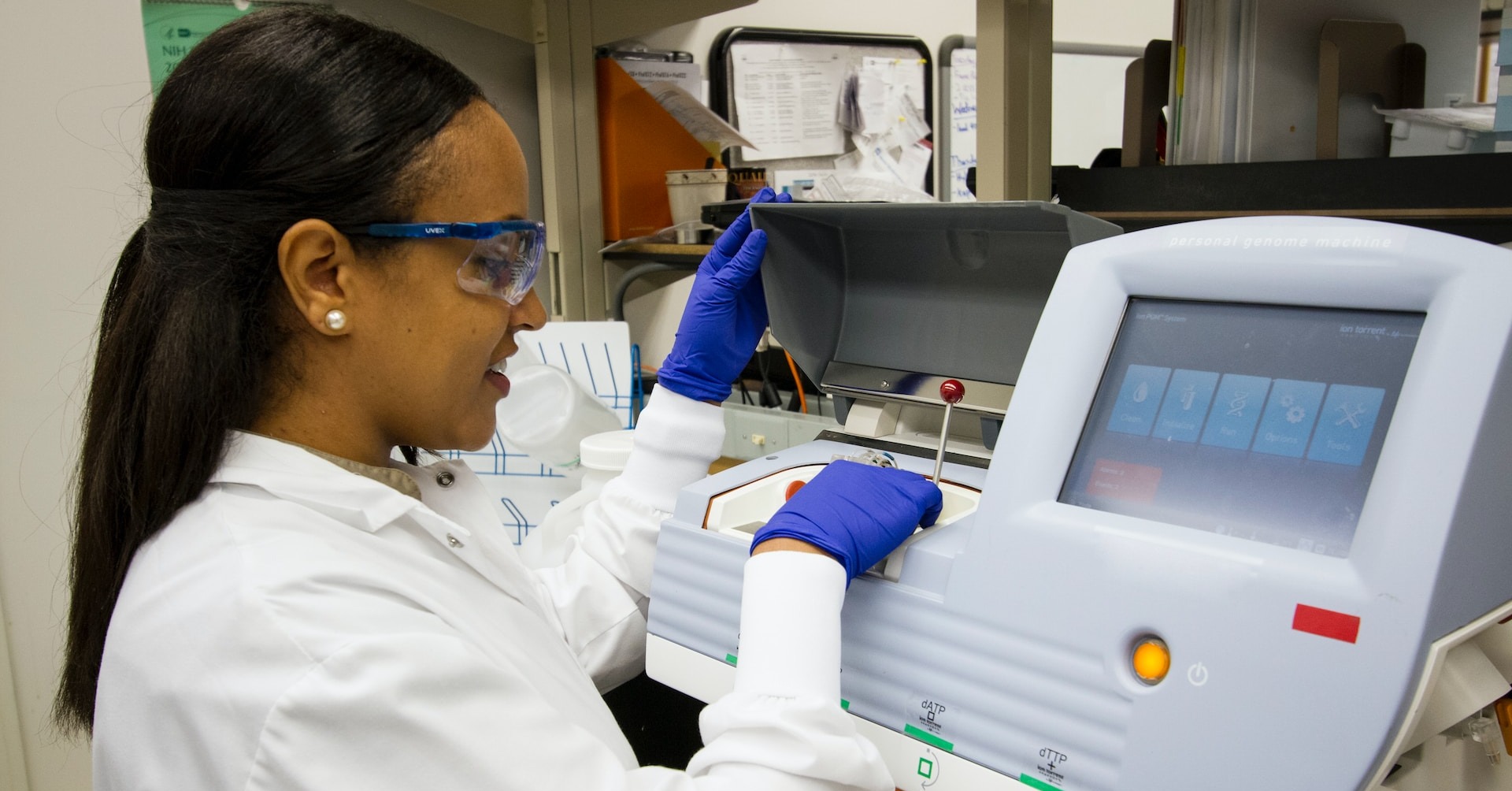
Where Do Epidemiologists Work?
Epidemiologists work in many settings, including hospitals, universities, and federal, [...]

Organizations across industries are collecting huge amounts of data, and many aren’t sure what to do with all this information. They know it can be used to answer business questions and solve problems, but finding useful and actionable insights in raw data is challenging.
That’s why more firms are hiring data analysts. These professionals work in manufacturing, marketing, healthcare, tech, retail, and other industries, making sense of a company’s data through the application of statistics, mathematics, computer science, and data visualization.
It’s a big job—and it’s getting bigger. Every day, users generate 7.5 septillion gigabytes of data. Data analysts help their organizations use that information to do things like:
Data provides the answer to many questions companies have; data analysts possess the technical skills and the analytical skills to find those answers.
This article answers the question ‘What do data analysts do?‘. In it, we look at how data analysts do what they do and what this role is really like. We cover:
If you’re a problem solver who loves numbers and deductive reasoning, you may be a natural-born data analyst. Data analysts are the kinds of people who can lose themselves in a complex puzzle or spend an entire day trying to find the answer to a trivia question. They like examining data and spotting trends.
They’re also patient. When the problem they’re trying to solve doesn’t have a quick or easy answer, they don’t get frustrated; they get excited. The problem doesn’t have to be particularly interesting, because what’s interesting is the statistical analysis involved.
Data analysts also tend to enjoy learning for learning’s sake. This is important for two reasons. First, because Big Data best practices and data analytics tools are always evolving, data analysts have to work to keep current where programming, data sorting, and database management are concerned. Second, there will always be a new problem to tackle that will require new approaches and new thought processes. Answering a new question might mean gathering data from new sources, analyzing new types of data, or using new tools.
In this role, you need to be flexible, adaptable, and willing to look at the problem at hand from varying perspectives and with various collaborators. As global consulting firm McKinsey Digital puts it: “Analytics is a team sport.”
| University and Program Name | Learn More |
|
Boston College:
Master of Science in Applied Analytics
|
|
|
Merrimack College:
Master of Science in Data Science
|
A bachelor’s degree might be all you need to land a good data analytics job. There are very few specialized undergraduate degree programs in analytics (Washington State University has one of the few BS in Data Analytics programs), so most aspiring data analysts get degrees in mathematics, statistics, business intelligence, or data science. If you want to become a data analyst, you should look into those majors… and then teach yourself the basics of programming, computer modeling, marketing analytics, and predictive analytics on the side.
There’s no ‘optimal’ educational pathway for data analysts. You can enter this field with a bachelor’s in any discipline that provides a thorough knowledge of:
You don’t need a data analytics or Big Data master’s degree to advance in data analytics, but having an advanced degree can help you qualify for more senior positions or transition to data science later in your career. There are more data analytics master’s degree programs than bachelor’s degree programs, so you’ll have more colleges and universities to choose from. These schools all offer solid analytics master’s programs:
Master’s programs in data analytics like these typically include hands-on learning opportunities and coursework focused on:
Some data analysts also pursue voluntary professional certifications, such as the:
In all industries, data analysts are primarily responsible for finding insights in information. They take the data collected by an organization and filter, clean, interpret, and analyze it. Then they compile their useful findings into reports for executives and stakeholders.
It sounds pretty simple, but it’s anything but. Even the most basic data analysis project can involve:
At some companies, data analysts do a lot more than manipulate data. They might have to design, maintain, and optimize the data collection infrastructure and generate custom analytic dashboards for non-technical colleagues. Some data analysts do a lot more programming, writing, and presentation design than actual data analysis.
They do all this for companies across industries and for different kinds of departments. As a result, data analysts might have titles as diverse as market research analyst, sales analyst, clinical or healthcare data analyst, operations research analyst, pricing analyst, financial analyst, or marketing analyst on their resume.
Data analysts aren’t typically hardcore coders, but it’s almost impossible to analyze data sets without basic programming chops. The two programming languages data analysts use most often are R and Python. Most data analysts and data scientists seem to agree that R has the best machine learning and statistical analysis packages. Python is catching up quickly, though, and has its own libraries for statistical and machine learning. It also supports tools like Apache Spark, Hadoop, and Apache Pig. Ideally, data analysts know both.
Data analysts also need to know Structured Query Language, or SQL, which is a management language for relational databases. SQL allows users to create and retrieve information from databases.
A data analyst at a large company might begin a typical day by checking email and responding to any time-sensitive queries. Next, they may review automated reports related to any work that was completed overnight.
Once they have a handle on their inbox, they’ll enter data, scrub related historical data, and run reports based on that data. Putting together a particularly complex report might take the rest of the day because executives and stakeholders have very particular ideas about how key metrics should appear. If there’s time, however, they might update various reporting and analytics dashboards they manage or build new dashboards. Sometimes this will involve manually entering data that can’t be generated automatically using current systems.
After lunch, a data analyst might attend an inter-departmental meeting where they will share recent findings or be given a new batch of queries to answer. If they’re working on any special projects—like analyzing responses from a large-scale survey—they might spend some of their afternoon hours on that. Otherwise, they’ll probably spend the rest of the day working on whatever queries are currently waiting to be addressed. At the very end of the day, they might have a quick meeting with their manager or the planning team before heading home.
There used to be a very distinct dividing line between data scientists and data analysts. However, that line is eroding as tools for sorting and sifting through data grow more sophisticated and easier to use. Quite a few employers now expect their senior data analysts to do the highly technical work that was once the sole purview of data scientists. However, most still acknowledge that these are two different roles.
Data analysts answer business questions and tell stories using information. Data scientists can analyse data and identify trends like big data analysts, but they’re also able to build custom data models for predictive analysis and code their own algorithms. They tend to be more experienced programmers and have deeper machine learning and mathematical modeling expertise. They’re also more likely to have advanced degrees than data analysts.
The answer depends on where a data analyst works. At a very small company, a data analyst might answer to the CEO or VP. Data analysts at large firms might report to the line manager of their functional business areas (e.g., the head of human resources or marketing manager).
Sometimes data analysts are technically a part of IT, in which case they might report to an IT director. And at some companies, data analysts aren’t part of any department or team. These floating data analysts might report to project managers or product managers, or to the leaders on various initiatives.
The average data analyst salary, according to PayScale, is about $60,000—not stellar when stacked up against how much people make in other tech jobs.
Your earning potential in this role may be much higher, however. With a master’s degree in data analytics, you might earn closer to $77,000 (or about 27 percent more). Data analysts in major metro areas like Chicago, San Francisco, and New York may do the same things as data analysts outside major metropolitan areas, but they tend to earn a lot more. And Robert Half Technology’s 2019 Salary Guide found that data analysts actually have an earning potential of between about $82,000 and $138,000.
Be aware, though, that data analyst salaries tend to max out after about ten years. That may be why it’s super common for analysts to transition to data science or data engineering after five to ten years.
The single biggest con of becoming a data analyst is that this job isn’t particularly sexy or prestigious. Data science is hot right now, and data analytics can seem kind of old-fashioned and stodgy in comparison. If you’re a numbers nerd, that won’t matter much. But if you want to be treated like a rock star (and paid like one, too), you should consider becoming a data scientist—a role that Harvard Business Review called “the sexiest job of the 21st century“.
On the flip side, there are lots of pros—assuming you’re someone who has a passion for data. You don’t need a master’s degree to launch a career in this field, and you’ll earn good money as a junior data analyst.
In addition, data analysis can be fun work. You’ll play with statistics, manipulate huge amounts of unstructured data, and solve puzzles all day long—and get paid to do it. You’ll develop skills that are valuable in just about every industry, which means you can transition between fields as diverse as healthcare and retail throughout your career. That kind of flexibility can translate into job stability.
Finally, data analysts are some of the most in-demand professionals in the world. That’s a huge pro. You won’t have trouble landing a job in this field, and if you do decide you want the cachet that data scientists have, the experience you gain in analytics can help you make that career switch.
(Last Updated on February 26, 2024)
Questions or feedback? Email editor@noodle.com

Epidemiologists work in many settings, including hospitals, universities, and federal, [...]

Modern business intelligence is all about data, which is why [...]

Modern businesses seek objective, quantifiable information to drive business decisions. [...]

Cyber security analysts earn around $105,000 per year on average. [...]

Computer and information systems managers are enjoying explosive job demand. [...]
Categorized as: Data Science, Information Technology & Engineering